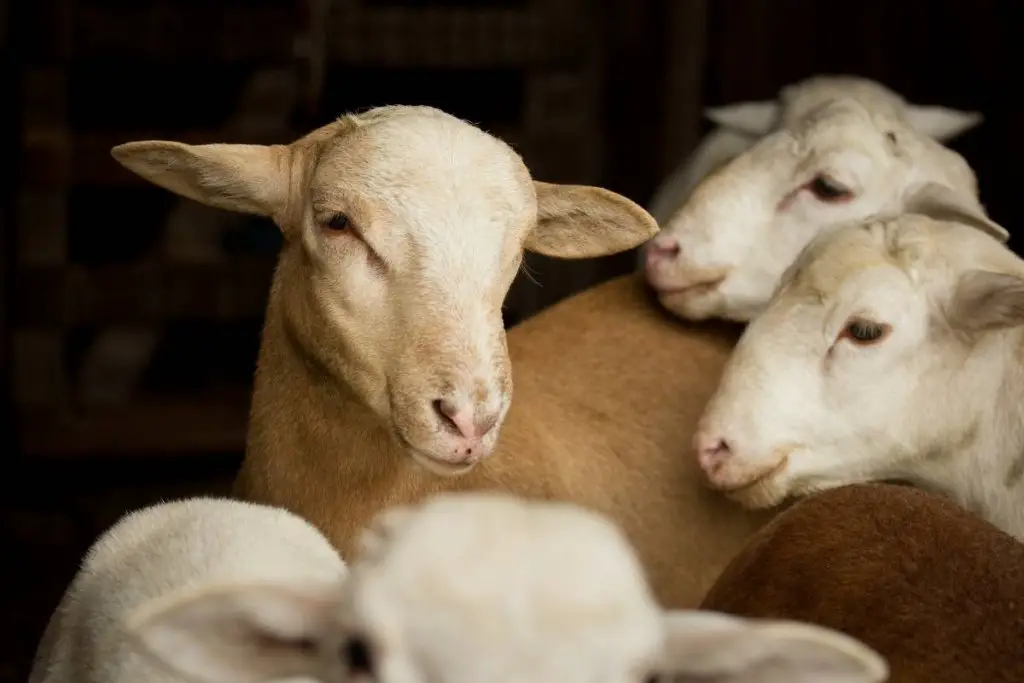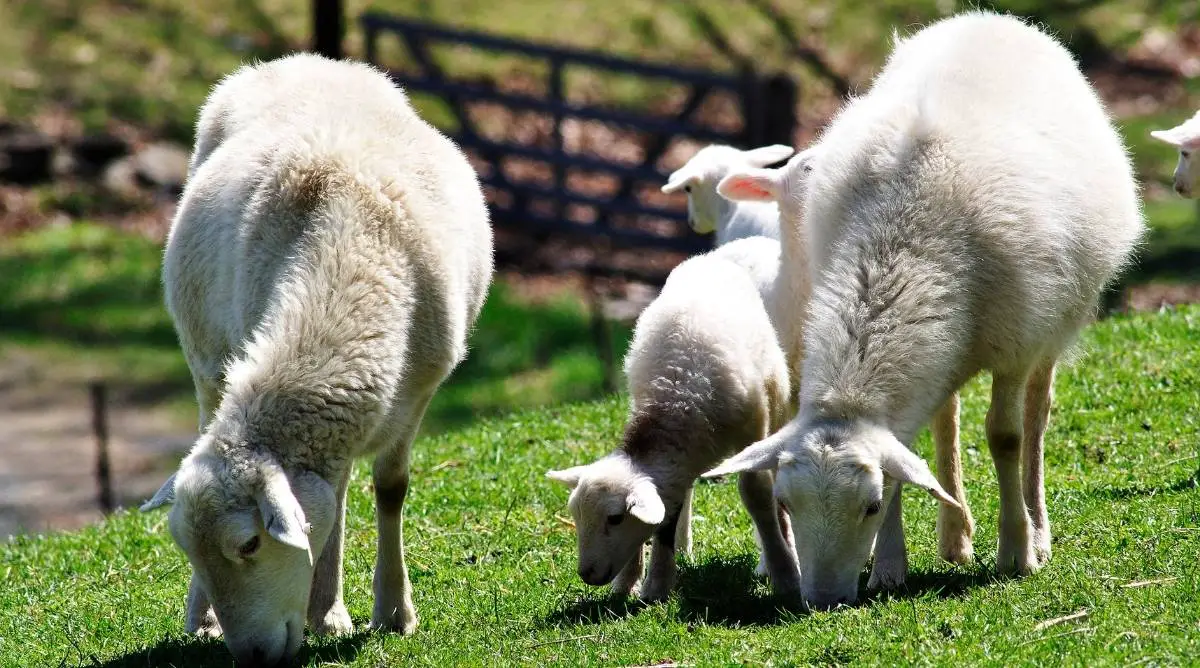Katahdin sheep are an adaptable, low-maintenance hair sheep breed used for meat and milk production. They originated in Maine, United States, and are medium-sized and hardy, with a docile temperament.
Table of Contents
Katahdin Sheep Breed Origin & History
Katahdin sheep were originally bred in Maine, in the United States.
An amateur geneticist named Michael Piel wanted to develop a low-maintenance breed that could produce milk and meat while grazing solely on plants and weeds. In 1970, he successfully developed the Katahdin sheep, named after the highest peak in Maine State.
Characteristics of Katahdin Sheep

| Characteristics | Description |
| Origin | Maine, United States |
| Wool | Katahdin sheep are hair sheep. Their hair is typically white, brown, or black in color. |
| Weight | A mature ram’s weight ranges between 180-250 pounds, while mature ewes weigh 125-185 pounds. |
| Meat | Nutritious meat with a sweet, mild, less-muttony flavor |
| Environment | Since they are a product of various breeds that originated in the Caribbean and in the British Isles, Katahdins are widely adaptable. |
| Common uses | Meat and milk production |
| Fertility | Ewes can commonly birth twins, and sometimes triplets and quadruplets |
Size & weight
Katahdin sheep are medium in size. A mature ram’s weight ranges between 180-250 pounds, while mature ewes weigh 125-185 pounds.
Adaptation
Since they are a product of various breeds that originated in the Caribbean and in the British Isles, Katahdins are widely adaptable.
During cold seasons, they grow a thicker hair coat which naturally sheds off into a smooth coat once summer begins.
Katahdin sheep have a high parasite resistance compared with other sheep breeds.
Mothering ability
Katahdin ewes have exceptional mothering ability. They mostly lamb without assistance, often giving birth to twins and occasionally triplets or quadruplets. The mothers have ample milk for lactation.
Temperament
Katahdin sheep are friendly, docile, and easy to handle. Nursing Katahdin ewes can be aggressive in order to ward off enemies.
Reproduction
Both Katahdin ewes and rams mature early. They also stay productive for many years. If you manage your flock well, you may get a 200% lamb crop. Properly-selected ewes can lamb out-of-season, while rams stay fertile all year.
Carcass growth and flavor
Their lean, meaty, well-muscled carcasses make the Katahdin sheep breed ideal for sheep meat producers. They produce nutritious meat with a sweet, mild, less-muttony flavor.
Distinctive hair coat
Katahdin sheep are hair sheep and grow a long, thick winter coat that sheds during the summer. They do not need shearing.
Katahdins come in various colors. While white is most common, you may also find brown, black, or red color variations.
Crossbreeding
Katahdin sheep are ideal for interbreeding programs. They breed well with wool sheep and may pass along their hair-shedding trait within three generations.
Low maintenance
As hair sheep, Katahdins are cheap to maintain. You don’t need to shear wool or dock tails. Additionally, Katahdin sheep graze on unwanted plants, saving time and money spent on maintenance.
Katahdin Sheep Breed Facts
- Katahdins are among the most popular sheep breeds in the U.S. There’s an ever-growing demand for Katahdin sheep, making it one of the most popular breeds for meat production.
- They have naturally-docked tails. Katahdin sheep are born with relatively short tails that don’t need docking. Katahdin breed standards suggest not docking tails with this breed.
- Katahdin sheep don’t need shearing. Like most hair breeds, Katahdins don’t grow wool. They have a hair coat that sheds off and grows back during the summer and winter. No shearing is necessary.
- Most Katahdins don’t have horns. Most sheep from this breed don’t have horns. They are naturally hornless.
- Katahdin ewes give birth to up to four lambs. Ewes from this breed typically give birth to twins. They are also known to deliver triplets and quadruplets.
- They have a lifespan of 10-12 years. With proper nutrition and management, Katahdin sheep can live a long productive life ranging from 10-12 years.

